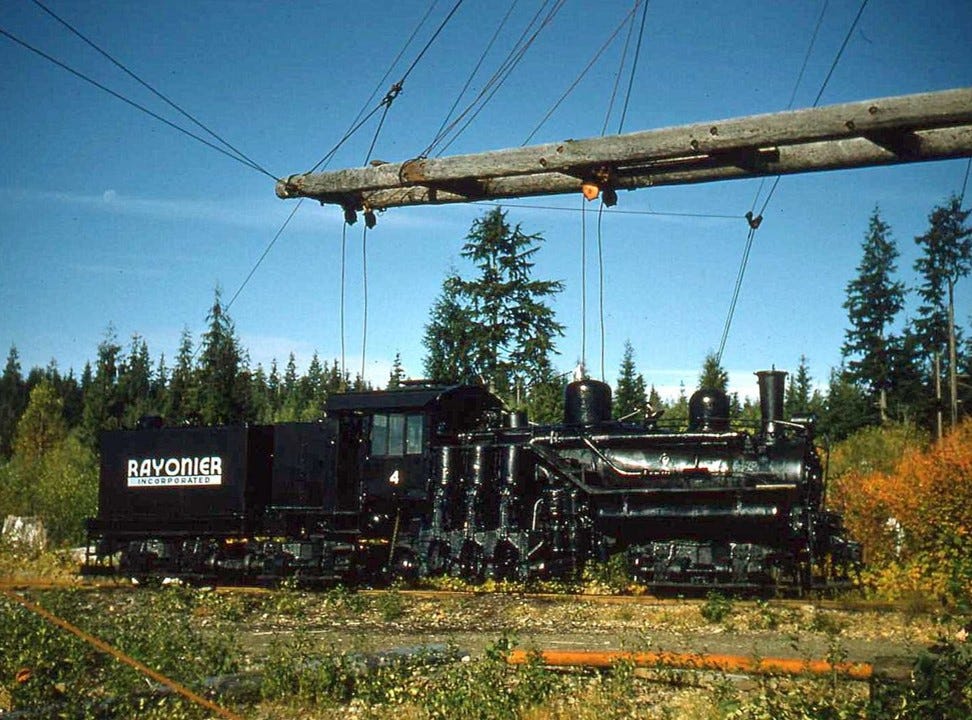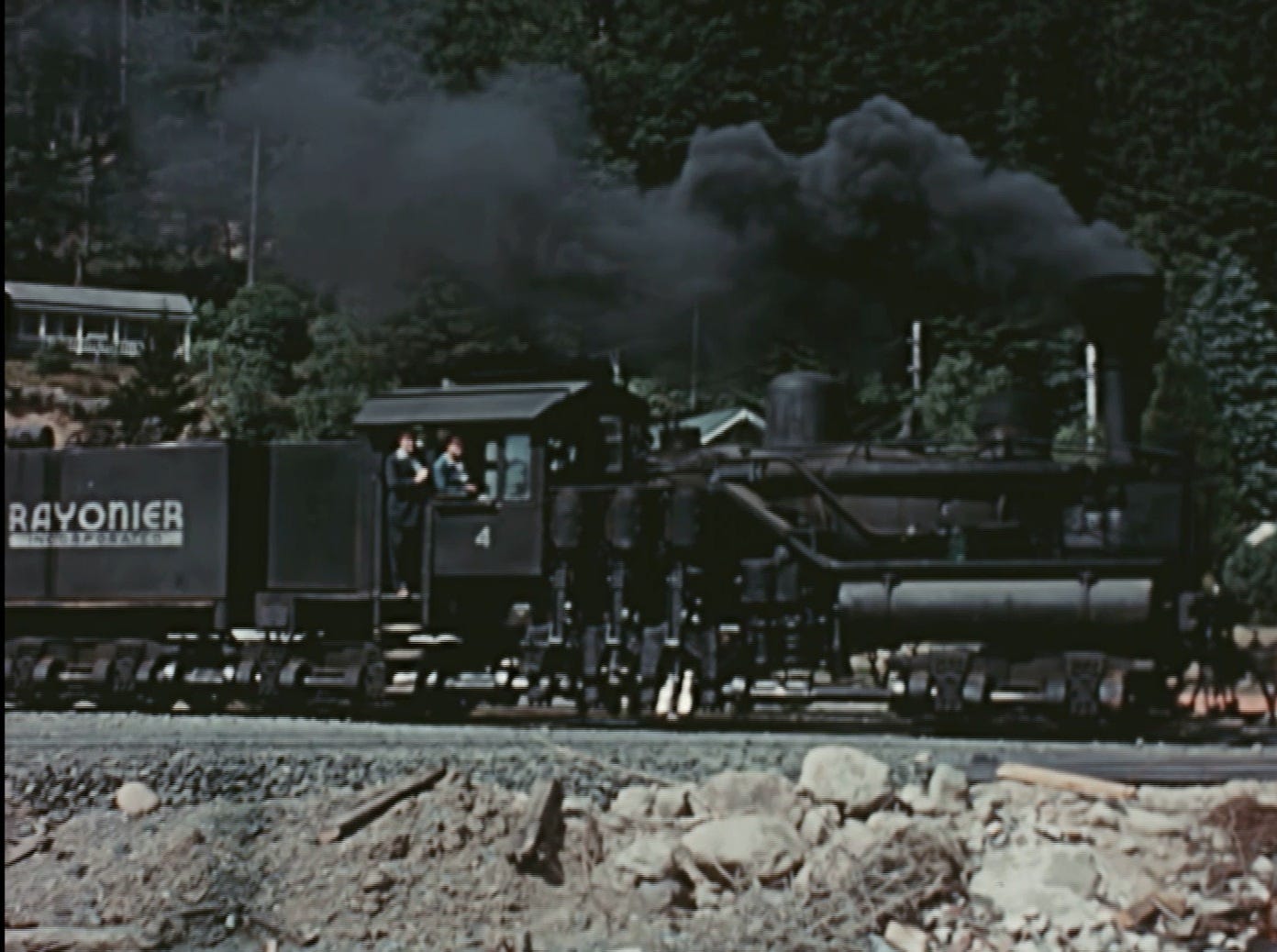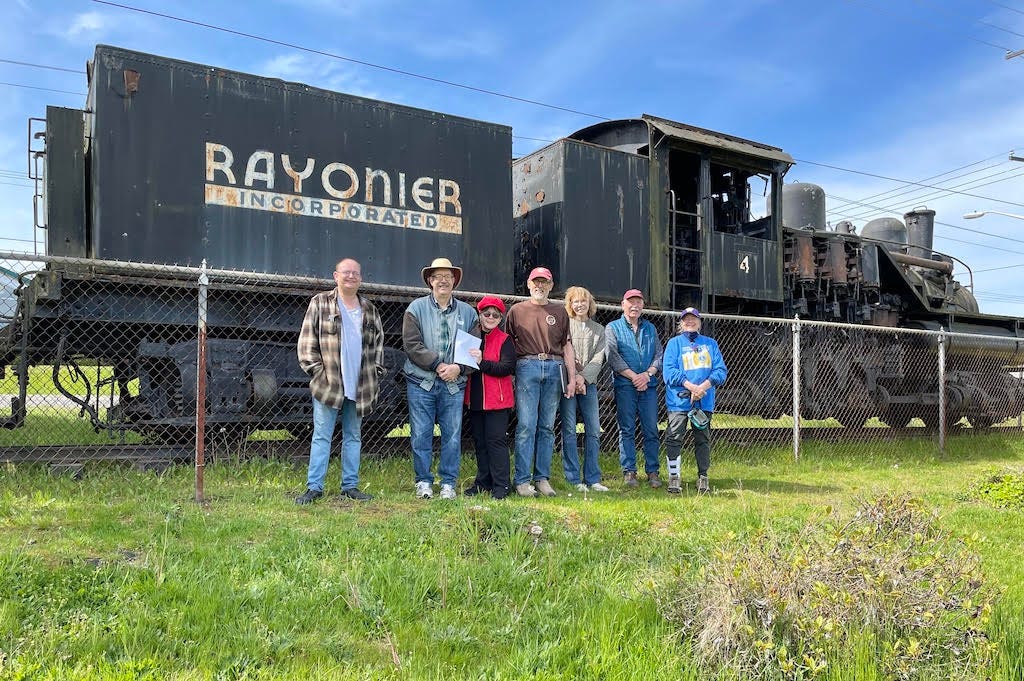Abandoned but not forgotten, Rayonier #4 has stood as a silent witness to the timber industry’s legacy in Port Angeles for over six decades. Now, one man’s lifelong connection to the locomotive has sparked a passionate community effort to restore it. Discover how history, dedication, and a race against time are bringing this rare piece of railroad heritage back to life.
For many, trains are more than just machines—they are symbols of industry, progress, and personal history. For Scott Golding, restoring Rayonier #4 isn’t just about preserving an old locomotive; it’s about honoring his family’s railroad legacy, his deep ties to the timber industry, and the heritage of Port Angeles. However, Scott is not alone in this endeavor—the restoration has become a passionate community effort, with dedicated volunteers and supporters playing a crucial role in bringing #4 back to life.
Scott’s love for trains was sparked in childhood, chasing locomotives with his mother, whose family worked on the railroads of the Midwest. His connection to Rayonier #4 runs even deeper—it was a familiar sight in Port Angeles, where his father worked, and later when Scott himself built his career at the Rayonier Mill. Though he relocated to Florida when the mill closed in 1997, his bond with #4 never faded. Now, as Rayonier Inc.’s historian, he’s leading the charge to restore the locomotive that has been part of his life for as long as he can remember, alongside a committed team of supporters.
A piece of timber and railroad history
Rayonier #4 is more than just an old train; it’s a tangible connection to the rich logging and railroad heritage of the Olympic Peninsula. Built by Willamette Iron & Steel of Portland, Oregon, it is one of only six remaining locomotives of its kind. Rayonier donated #4 to the City of Port Angeles in 1960 as a monument to the region’s once-booming timber industry. Back then, timber was king, and the locomotive’s presence spoke for itself. However, as the industry’s role diminished over the years, the locomotive became more of an overlooked relic than a respected monument.

Recognizing its deteriorating state, Scott reached out to the City of Port Angeles to ask about its future. The city had long hoped for a restoration effort but had struggled to find leadership for the project. Despite living 3,000 miles away in Florida, Scott immediately stepped up to take the lead. With Rayonier Inc. joining as a project partner and a dedicated team of volunteers rallying behind the cause, the effort to “Restore the 4” was officially underway.

Challenges and triumphs
Restoring a historic locomotive is no small feat. One of the biggest initial challenges was overcoming skepticism—#4 had been sitting untouched for so long that many doubted whether the project could succeed. Securing funding was another major hurdle, as restoration costs quickly exceeded initial estimates. However, the project gained momentum thanks to generous contributions from over 300 individual donors across the U.S., as well as support from local businesses and tourist tax funds.
For Scott personally, the biggest challenge has been managing the project from afar. While frequent trips to Port Angeles and modern technology help him stay involved, there’s no substitute for being there in person to coordinate efforts. Fortunately, a dedicated team on the ground has been instrumental in keeping the project moving forward. Despite the difficulties, progress has been steady. The asbestos cleanup—a crucial first step—has been completed, and the next phase includes bidding out restoration work and constructing a protective shelter to ensure #4’s future preservation.
How the community can help
While significant progress has been made, there is still work to be done. The project team is currently raising the final $50,000 needed to complete the restoration. Community members can contribute in several ways:
Donate: Every dollar counts toward restoring this vital piece of history. Donation information is available here.
Sign the Guestbook: The project’s website (www.restorethe4.org) features a guestbook to demonstrate broad community support, which strengthens applications for grant funding.
Attend Events: On March 30 at 3:00 PM, local historian Steve Hauff will give a presentation on #4 at the Port Angeles Library (across the street from #4), followed by a rare opportunity for attendees to see the locomotive up close.
Keeping on track
With a targeted completion date this summer, the excitement around Rayonier #4’s restoration is growing. The project represents more than just saving an old locomotive—it’s about preserving the history of the community, educating future generations, and honoring the legacy of those who built the region. Thanks to the dedication of Scott Golding, the City of Port Angeles, and countless supporters near and far, #4 will soon stand proudly once again as a symbol of the area’s rich timber and railroad heritage, just in time for Rayonier’s centennial in April of 2026.
CC Watchdog ends the week on a high note featuring individuals and organizations positively impacting our community.





Jeff, Thank You for a trip down memory lane. I can remember that as a young father I would take my young-uns to play on that locomotive before some idiots decide that the asbestos welded up tight in the boiler was to dangerous and fenced it. This area has a rich history with railroads running through it. I had the opportunity once to hear a member of the King family tell the tales of hitching rides into town on the many "Steam Donkeys" that used to run throughout our area. Are you a member of NOPR? Just curious.
Very heartwarming story! I was surprised not to see your usual investigative reporting into our local political situation. Nice change of pace! I totally agree that from a historical perspective that train is worth saving. Yet at the same time Rayonier walked away from this community leaving a deep stain on the land that still needs to be fixed. Shame on them.